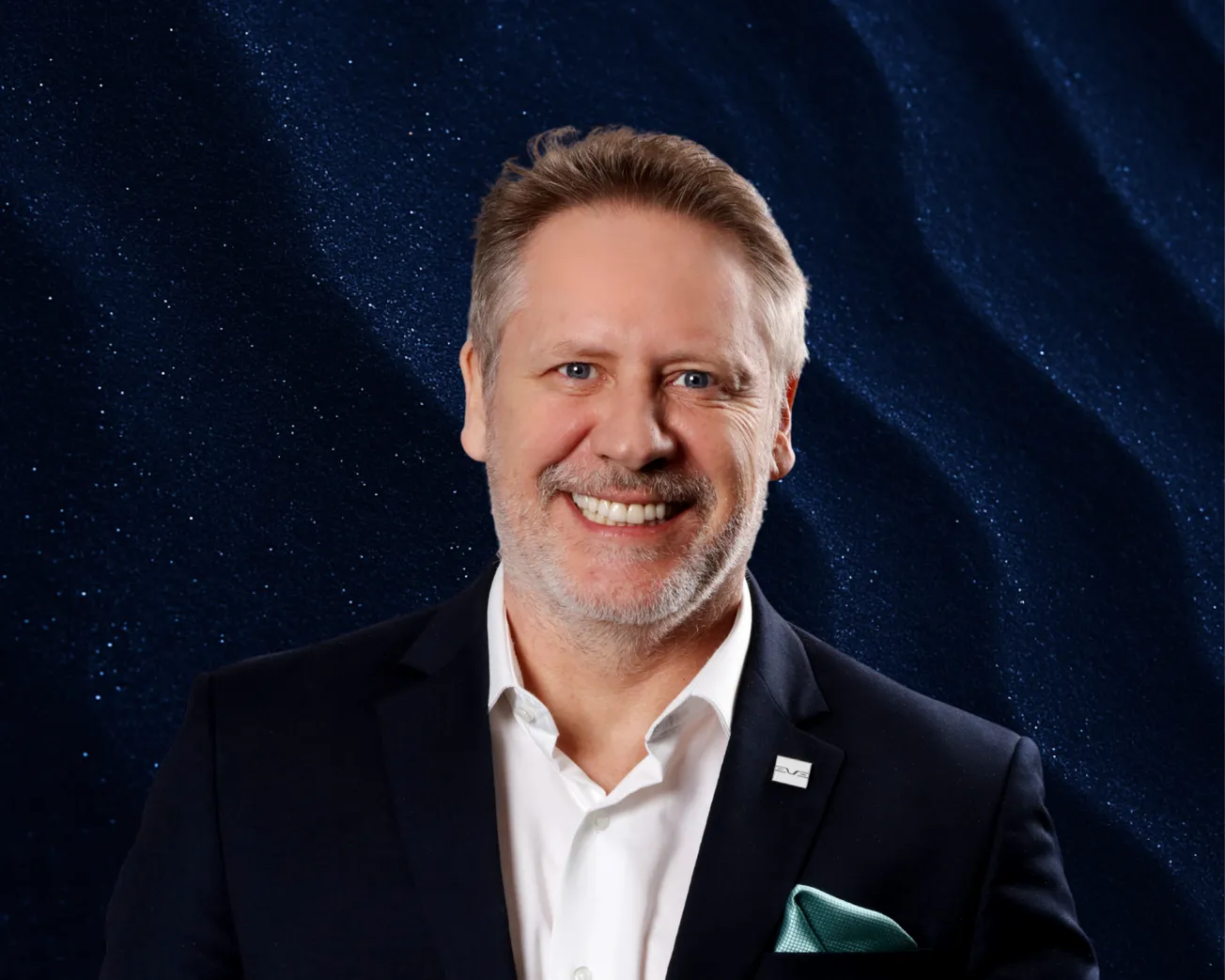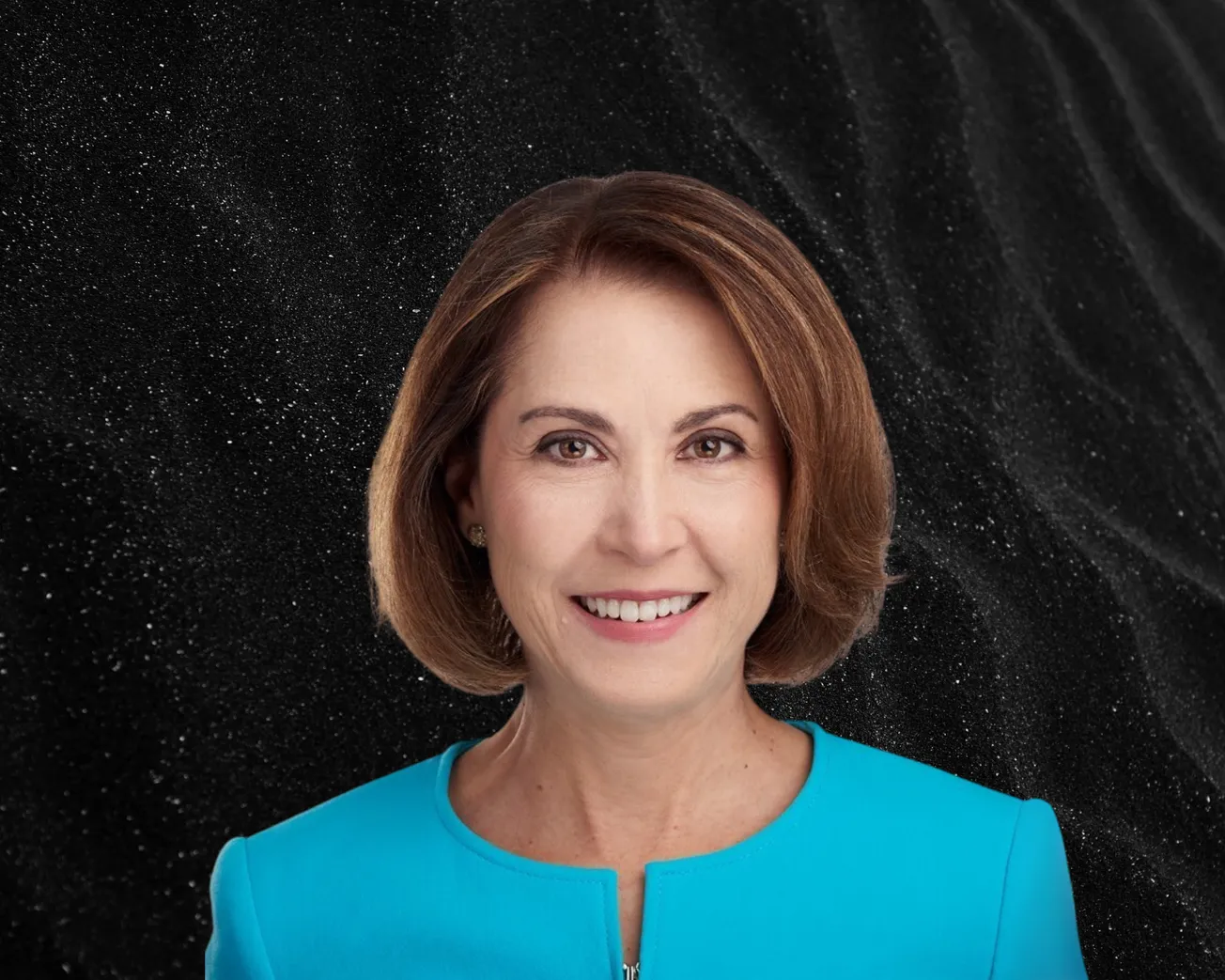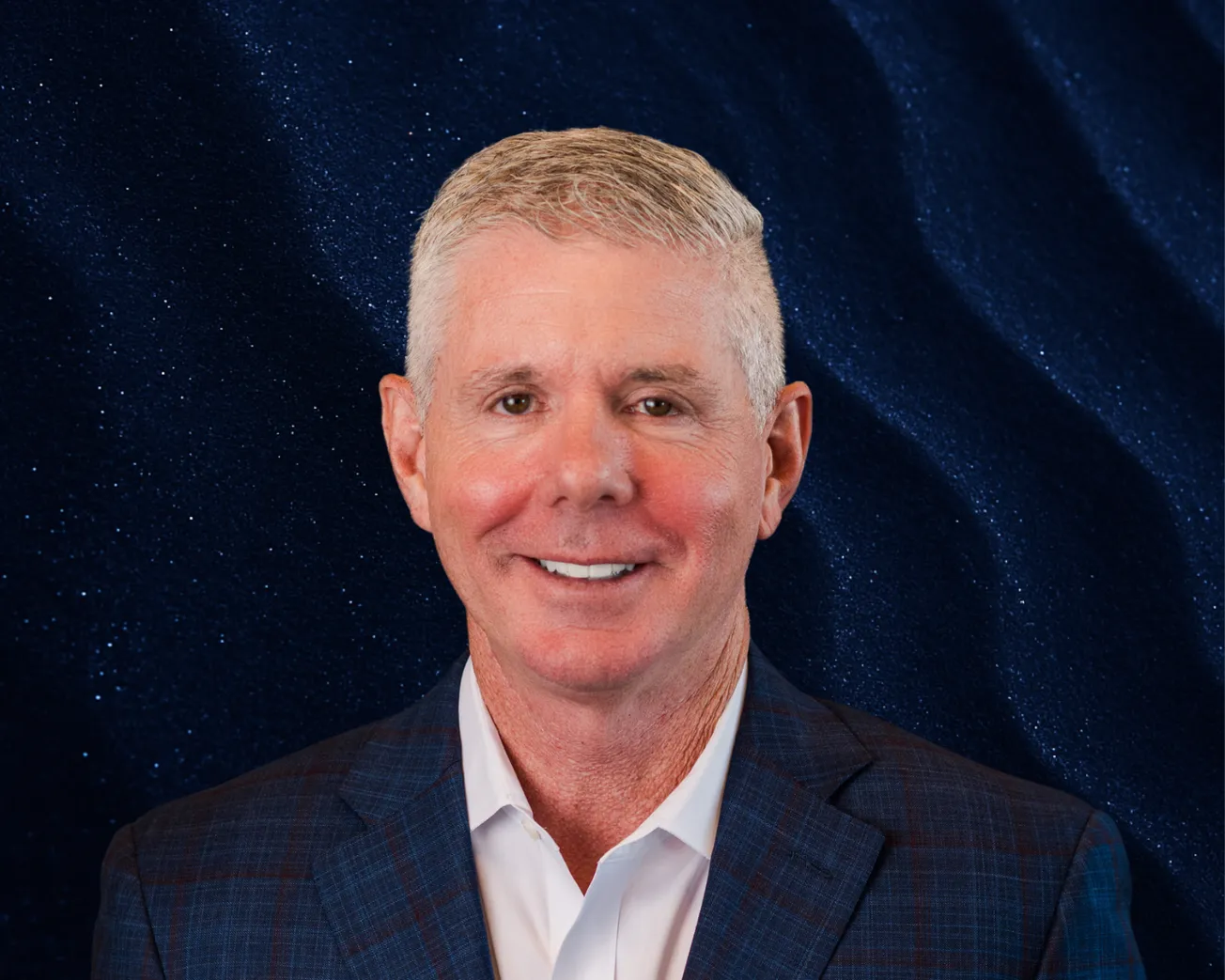Table of Contents
Johann Bordais, CEO of Eve Air Mobility, sat down with Onyx for a feature-length interview.
Could you start by telling us a bit about your career journey and how you ended up leading Eve Air Mobility?
I would love to! Well, my name is Johann Bordais. I’m the CEO of Eve Air Mobility, whom I had the greatest pleasure to join back in September 2023, so it’s been almost two years now. Time flies!
I’ve been in the aviation industry for 30 years. I started in the family business in Dallas, Texas - selling spare parts for engines. Then I moved to Paris, as I’m actually French. I currently live in Brazil, where I’ve been living for twelve years.
I worked at an authorized aircraft service center in Paris, and then I joined Embraer - the third-largest aircraft manufacturer. I started as a supervisor of the call center, and my career at Embraer was dedicated to serving customers. I think it’s really important. It’s all about execution. You can design the best airplane, make the biggest sales - but, at the end of the day, it’s all about availability. The vehicle’s got to be operational. That’s what matters!
I took a business that was, 25 years ago, making $30 million in spare parts sales - that’s all it was - and when I left the company, two years ago, it was a $1.4 billion business unit. The fourth largest business unit of Embraer. So, yeah - execution!
Where is Eve now, in terms of development and delivery?
Eve was incubated at EmbraerX - the innovation branch of Embraer - back in 2017. We spun off in 2020. Then, in 2022, we went for an IPO. And now, we’re at the execution phase, with the first prototype, or what we call the engineering prototype, which we revealed last year at the Farnborough Air Show.
And when do you expect those pre-orders to start converting to revenue?
New revenues will definitely be in sync with certification and entry into service. We may be able to get PDPs - pre-delivery payments - based on the order conversion, but it will really be 2027 for the certification and first entry into service.
What’s the cost of building one of these aircraft, and how are you funding the program?
When we IPO’d, on May 10th, 2022, we managed to get $400 million. Then, in 2024, we went for another equity round - it was a mix between debt and equity. We’re also getting support from the national agencies - BNDES, in Brazil, gave us 690 million reais to support vehicle development and to set up the factory we have in Taubaté. That’s in the countryside, not far from São José dos Campos.
Right now, our yearly budget is really dedicated to R&D - we’re spending about $200 to $250 million. Last year, it was $150 million, as we were ramping up towards certification. As we move forward, that will reduce. We’ve got a contract with Embraer - the Master Support Agreement - to perform the engineering work and also to help set up the manufacturing side of the business.
What’s the production ramp-up going to look like?
It’s definitely in three distinct stages. The first was the engineering prototype - and that’s being tested at Embraer’s Gavião Peixoto facility, which has been their main test site for years.
We’ll then build five to six conforming prototypes at the Embraer plant in Ozires Silva Unit in São José dos Campos. After that, we’ll move into pre-series and series production at Taubaté. It’s what we call a brownfield site - not greenfield. The whole philosophy behind that site is modularity. So, the first line allows us to build 120 vehicles per year. Add some tooling and a second shift, we can double that to 240. The maximum capacity is 480 aircraft per year.
We’re renting facilities from Embraer - it’s the same thing for the headquarters in Melbourne, our office in São José, and even the factory. That gives us flexibility to turn the key at the right moment and make the investment when we’re ready to do so.
What kind of upkeep or infrastructure is required for a customer operating one of your aircraft?
The idea is that, in 2027, we can start the operation using existing infrastructure. If you take a city like São Paulo, we’re talking about the biggest fleet of helicopters in the world. More than 410 helicopters, with over 2,000 takeoffs and landings per day! There are more than 260 registered helipads. It’s already set up for air mobility, as it already exists for helicopters. What we’re doing is making it fully sustainable by using what’s already there. That’s the beauty of it!
Out of those 260 helipads, almost 100 can be used for our eVTOL (electric Vertical Take-Off and Landing) operation. You need to transform an existing helipad into a vertiport or vertihub. The key difference is flow. Instead of five to six passengers a day, you’re talking dozens, or even hundreds. That means adapting infrastructure to allow for proper passenger movement.
It’s all about the ecosystem - notably the air, power, and ground infrastructure. You’ve got to have your grid ready. Our aircraft requires a 150 kw/h charger, very similar to city buses. We’ve done a lot of CONOPS (concept of operations) around the world - in São Paulo, Chicago, the UK - testing inflow and outflow, modeling what an intensified eVTOL operation would look like. We’re learning how to make it seamless, which is incredibly important.
How does the environmental impact of your aircraft compare to helicopters or traditional vehicles?
It’s pretty simple - Eve’s eVTOL has zero emissions. It’s 100% electric. One pilot, four passengers. Lift-and-cruise configuration, with a range of up to 100 kilometers.
At the beginning, it’s mainly focused on airport shuttles and point-to-point city operations. That’s perfect for a place like São Paulo, or any of the world’s megacities.
We recently shared our market outlook at the Paris Air Show. Two main facts are driving this: First, the global population is increasing - there’ll be 2.5 billion more people on the planet by 2050. Second, we’ll have over 800 cities, each with more than a million inhabitants. That means congestion is only going to get worse!
We’re not trying to solve transit or replace cars, but we can offer an alternative. That’s what we want - to open the skies to urban dwellers. Just give folks a new way to move.
Who do you expect to use these first - individuals, governments, or commercial operators?
This isn’t a Jetsons-style flying car that you buy and park in your garage. It’s a third category - power-lifted aircraft. You’ve got airplanes, helicopters, and now eVTOLs.
So it’ll be operated like any aircraft - through Part 135 (FAA-) certified operators with trained pilots and full maintenance. Above all, one of Eve’s core values is safety.
One example is Revo, our first customer to convert to a binding agreement. They’re a startup air mobility company in São Paulo, running helicopters from downtown to the airport and point-to-point across the city. They’ve already got a successful operation and are eager to replace helicopters with eVTOLs - primarily because they’re quieter, more reliable, and have lower operating costs.
So, in the future, could I book a flight, like calling an Uber?
That’s definitely what we’re envisaging. By offering safe and sustainable air mobility solutions, we’ve given ourselves the mission to reimagine the human connection - with safe and sustainable air mobility solutions.
It’s about more than just the vehicle and certification. It’s the whole ecosystem - infrastructure, support, service.
There’s also a third pillar that no one’s really talking about yet - air traffic management. While it may not be something you need at the beginning, but, when we’ve got thousands of aircraft flying, we’re going to need safe and robust software to manage that. Eventually, we’ll go autonomous - albeit gradually - but that traffic system has to keep up and scale.
People don’t realize, but Embraer developed Brazil’s air traffic control software - for the whole country - and for some others, too. So, we’ve got to plan it right from the outset.
What’s the lifespan of one of these aircraft? And how recyclable are the components?
From day one, our design philosophy has centered around the aircraft’s lifecycle. We didn’t design a prototype and figure out operations later. It’s all integrated - engineering, industrialization, and operation.
We have 51 primary suppliers, and our contracts cover not just the parts for the prototype or the production units, but the full operation, including their repair, and the reuse and recycling of the components. We’ve asked ourselves as to how we can repair it instead of replacing it. What materials are recyclable or made from recycled input?
Batteries will evolve - the tech shifts every three years. So, when we remove a battery after a year or 18 months, we want to retrofit it, recycle it, and reinsert it. That sustainable thinking has permeated throughout the whole vehicle.
Will cities need to upgrade charging infrastructure to keep up with the scale of eVTOL growth?
Yes, absolutely, but there’s good news! In many cities, electric vehicles and electric buses are already forcing power upgrades. And what we’ve been pleasantly surprised to find - well, we expected it, but it’s nice to have confirmation - is that this infrastructure is very similar to what we’ll need for eVTOLs.
We’re not reinventing the wheel. We’re piggybacking on existing EV and bus charging networks. We’re just needing it to scale and adapt.
Fast forward to 2035 - what does Eve look like?
In 2035, Eve will be a key, fully sustainable, actor in urban air mobility, operating around the world. We have the largest backlog, with 2,800 pre-orders. Certification will unlock Brazil and, also, North America, thanks to the bilateral agreement between Brazil’s ANAC and the FAA.
We’ll be present in Australia, India, the Middle East, Japan - all the places that believe in sustainable air mobility. Governmental and public acceptance are key. But I believe people are ready for this transition!
Since I joined the company, I’ve said, again and again, we don’t want to be the first - we want to be the ones to do it right.
What advice would you give to a future executive in aviation?
A passion for aviation is something that’s inherent. You might come to aviation by chance, but you don’t stay by chance. It gets into your blood.
Aviation is about getting people safely from A to B. Whether the flights are for defense, executive, or commercial purposes is immaterial. That’s the core of it.
So, for any young executive, I’d say “be strategic”. Put the customer and safety first in everything you do. Always! That’s the foundation. And, above all, enjoy the ride!






